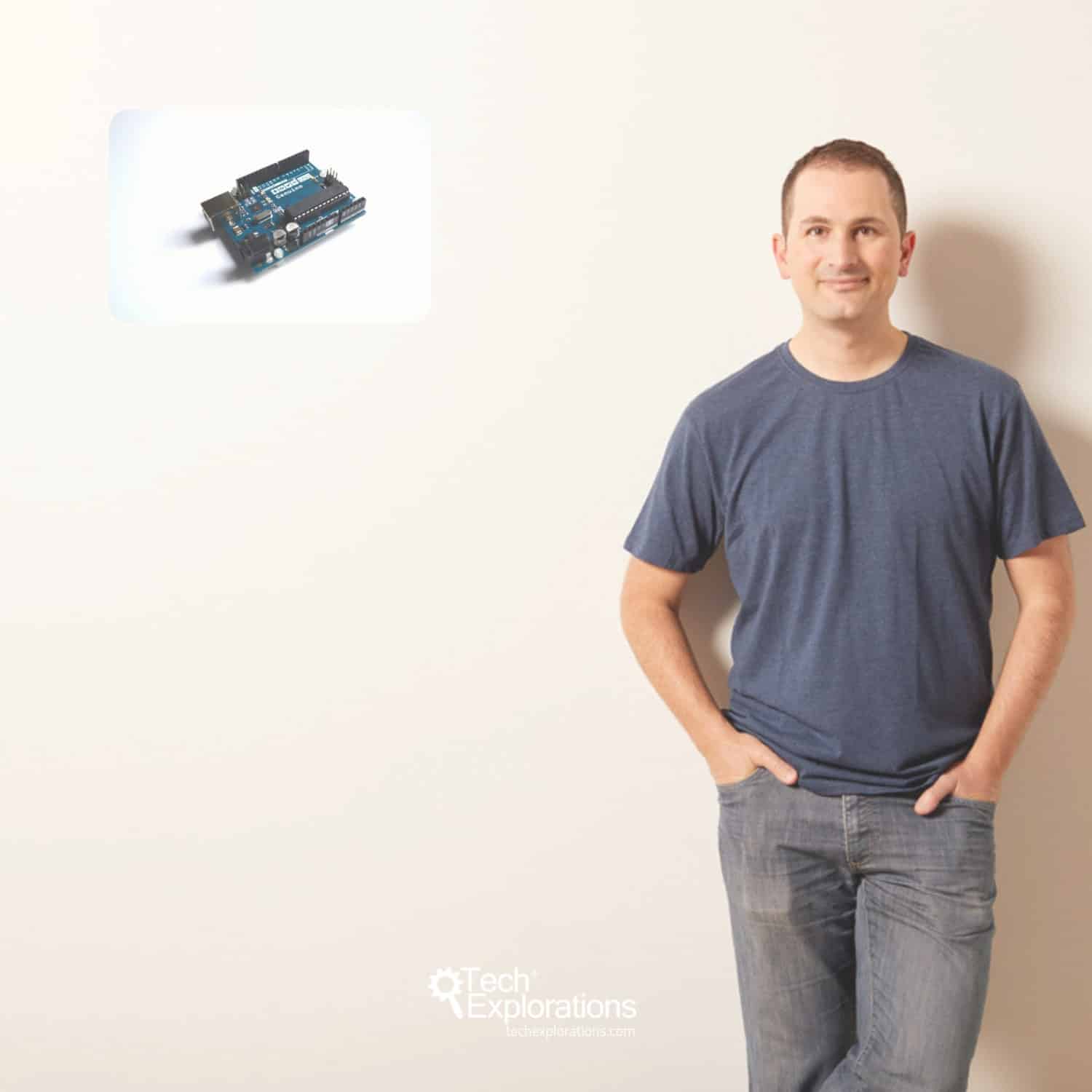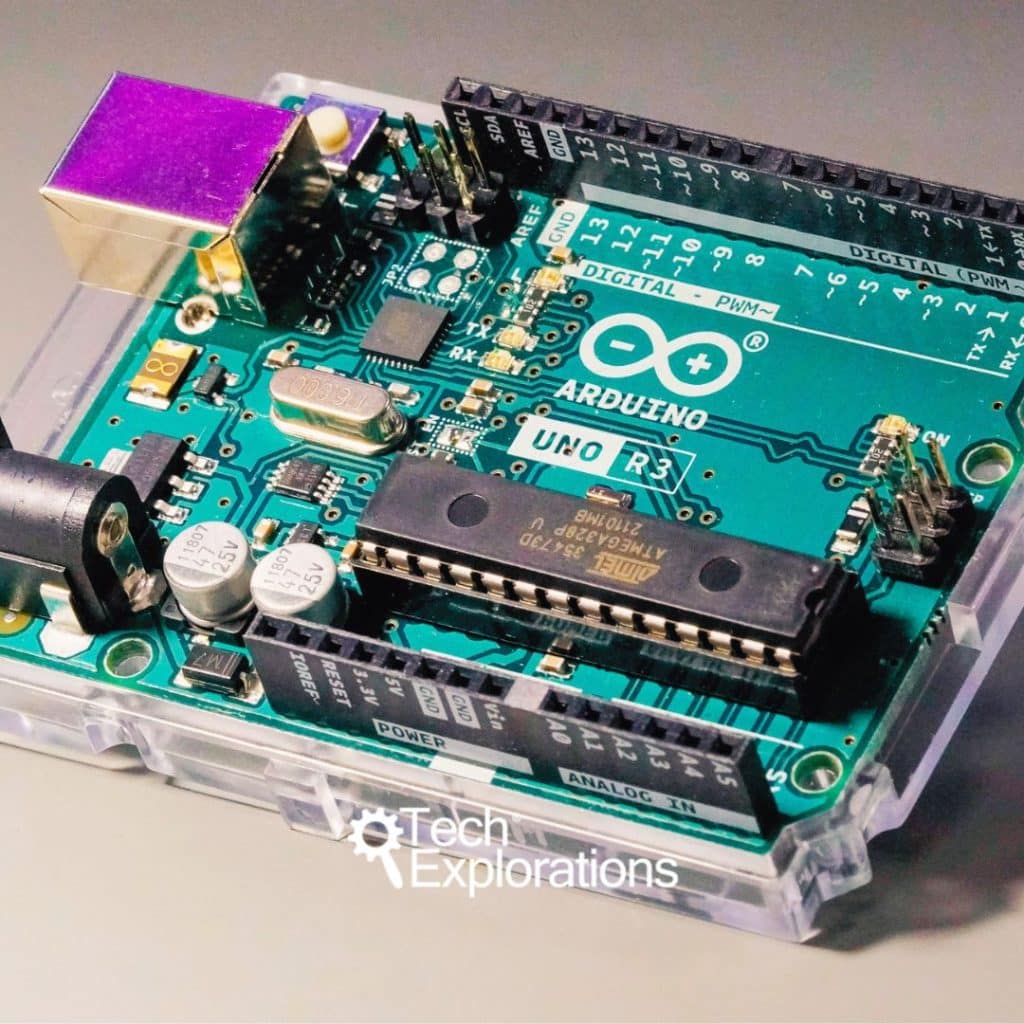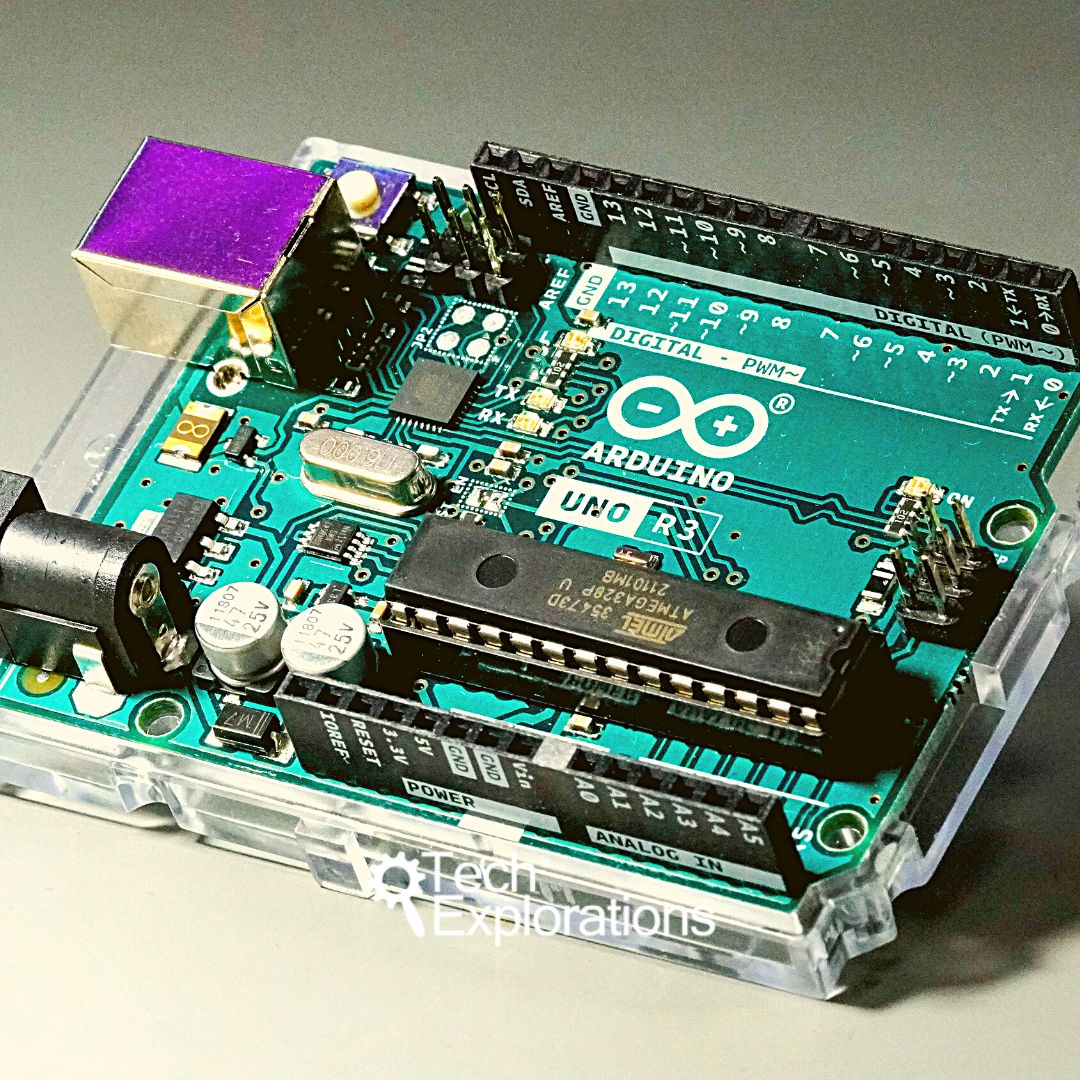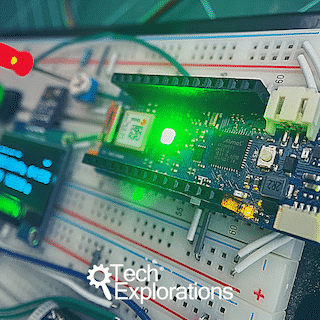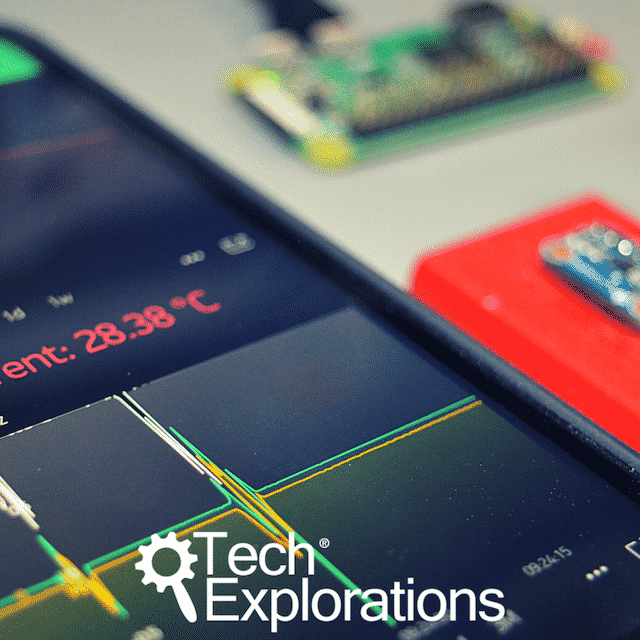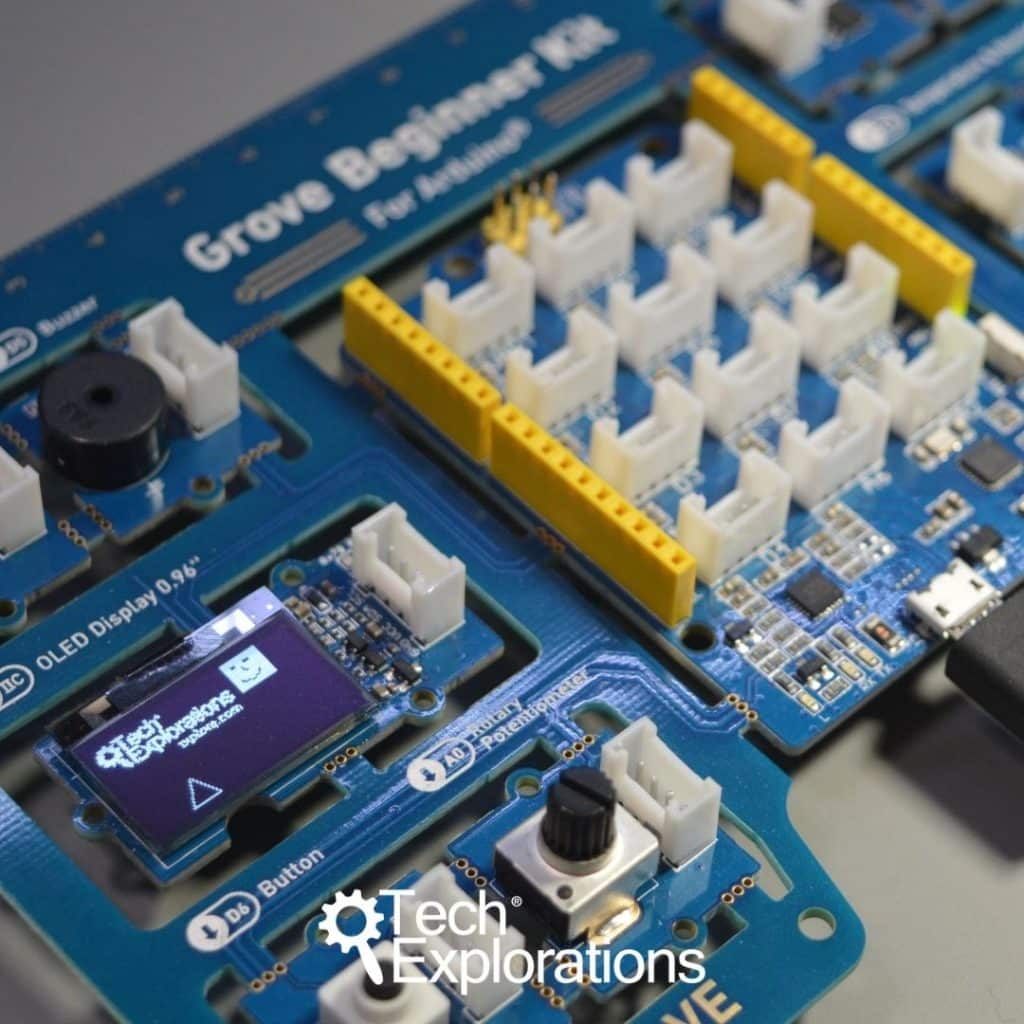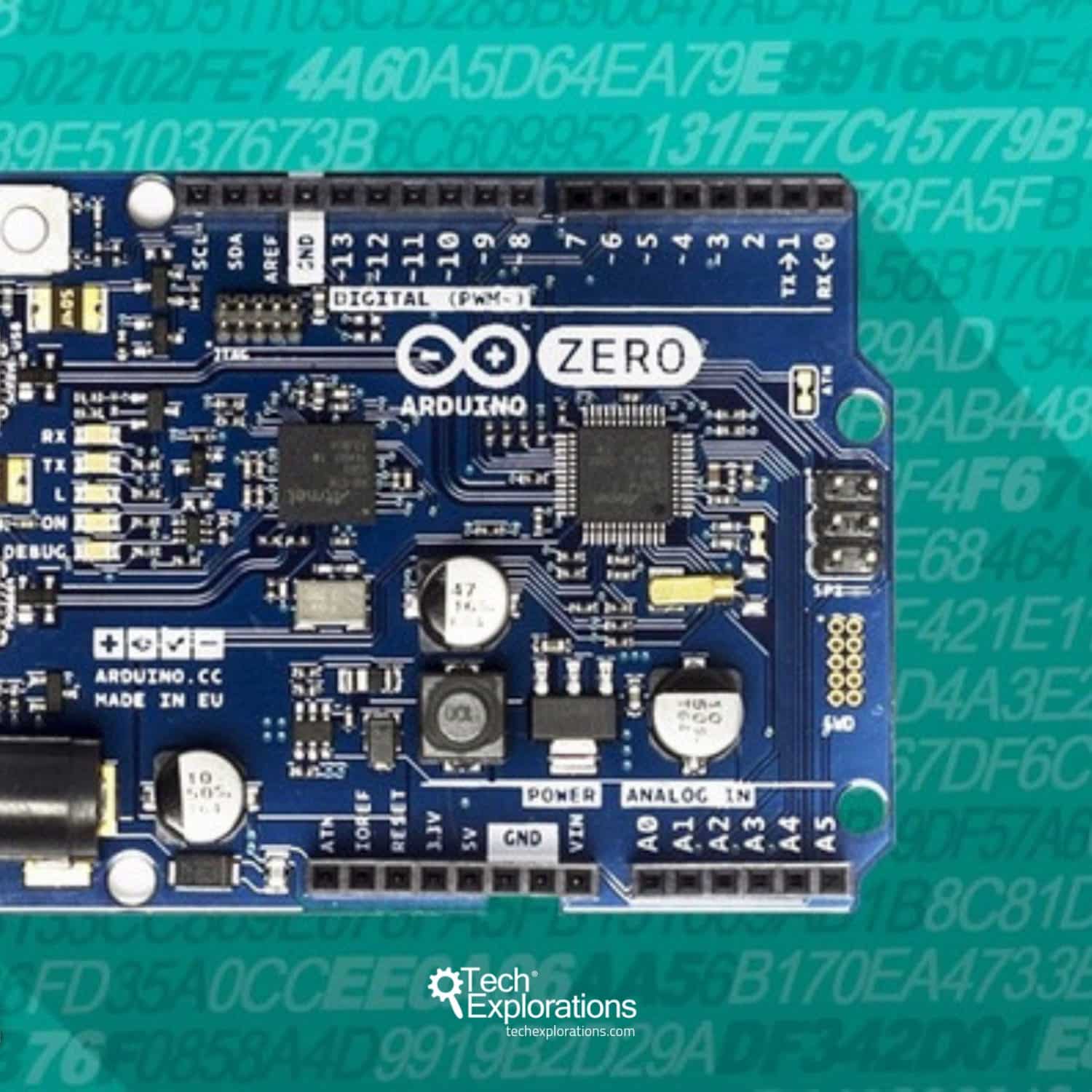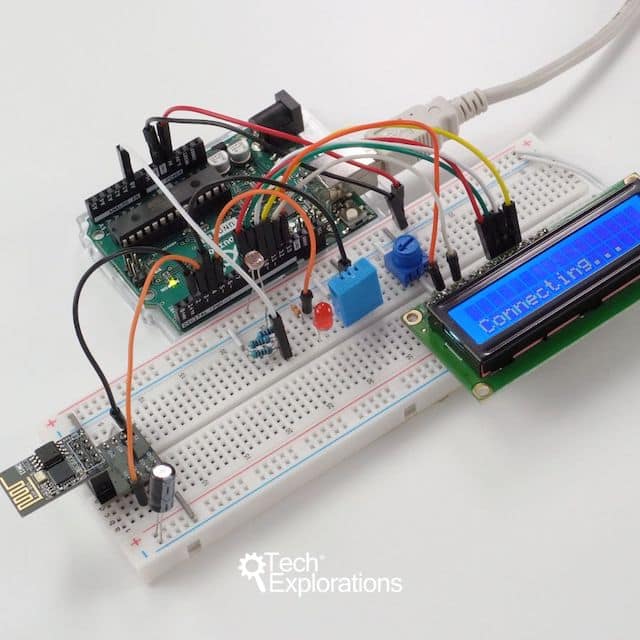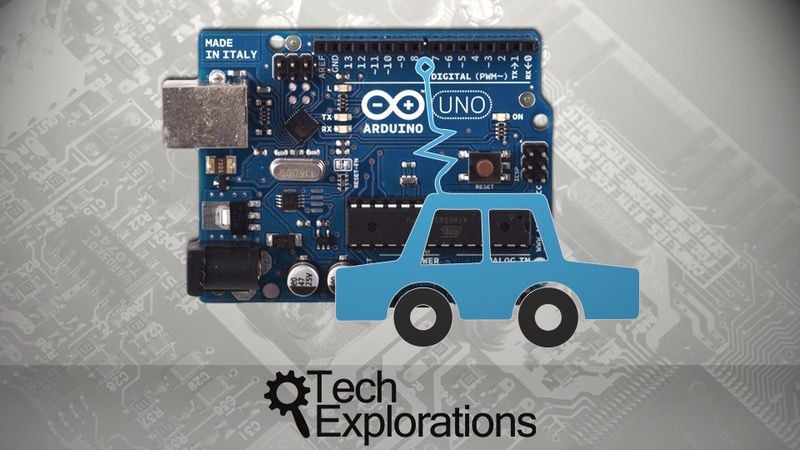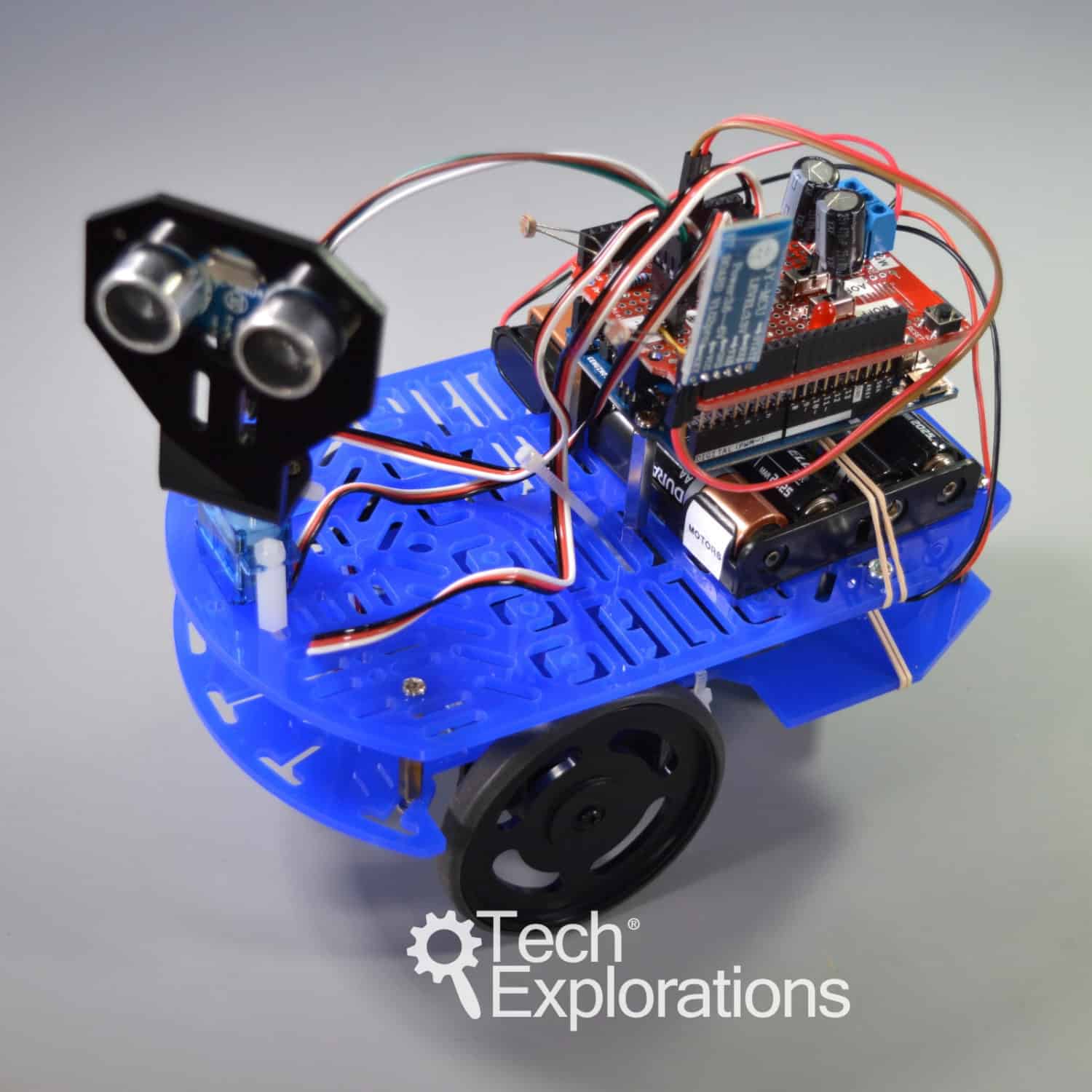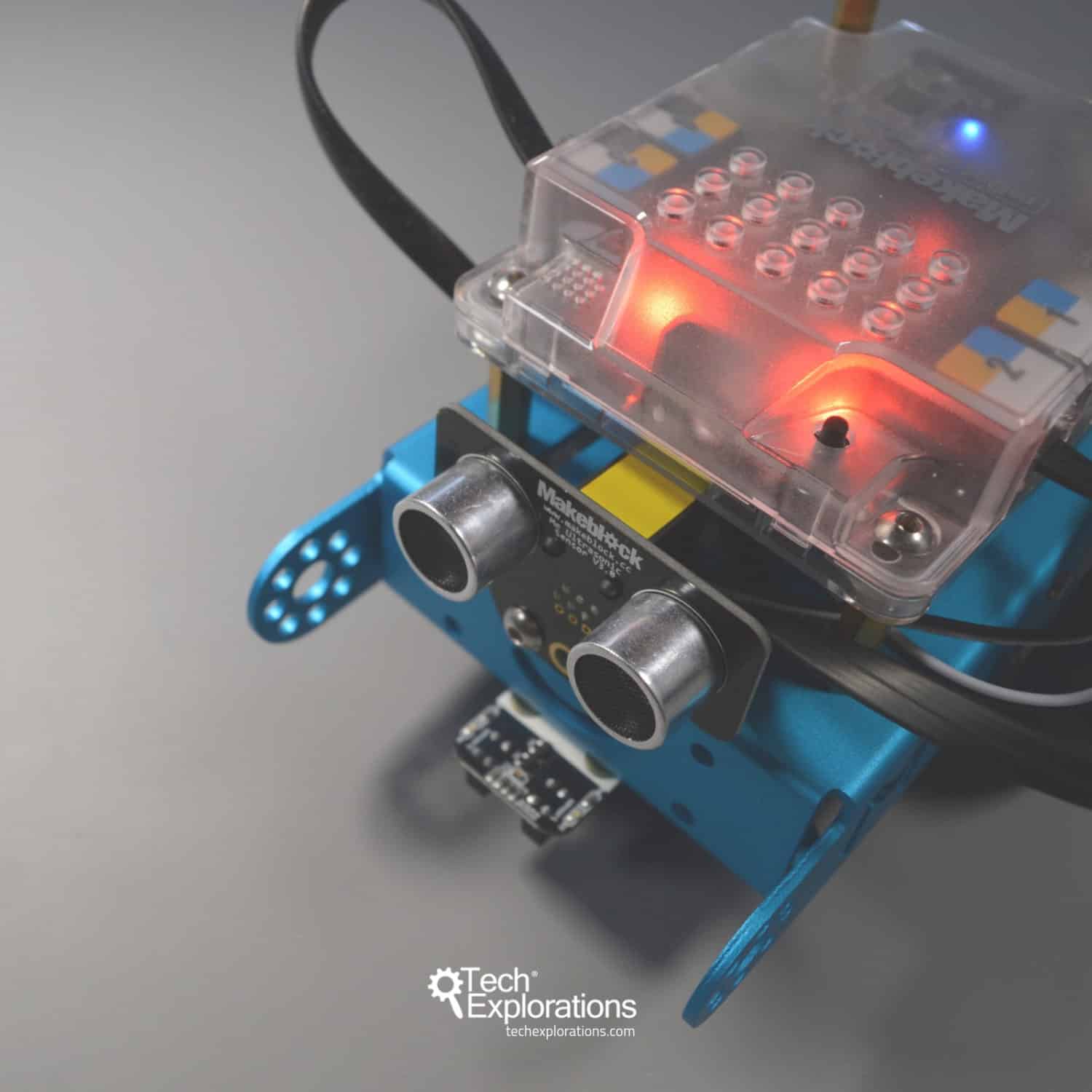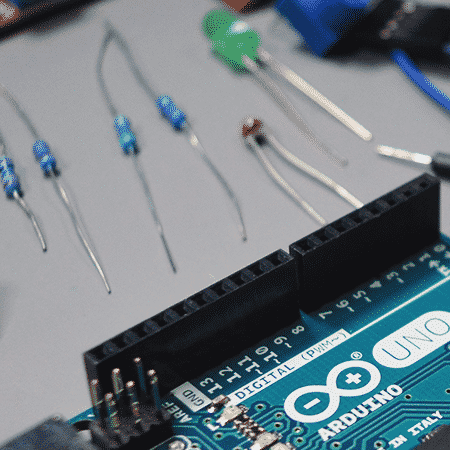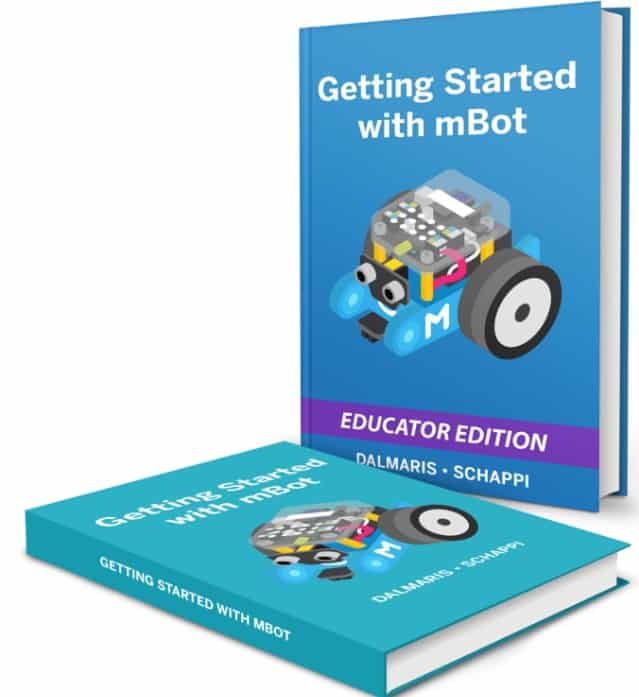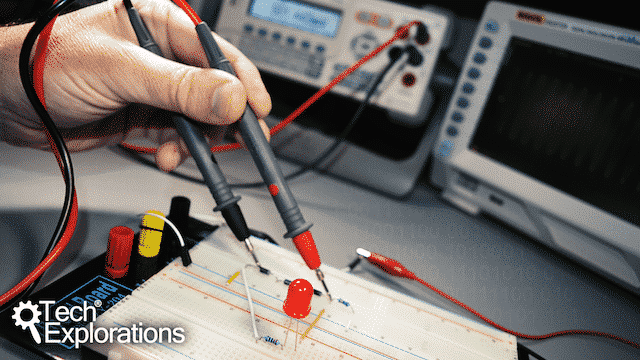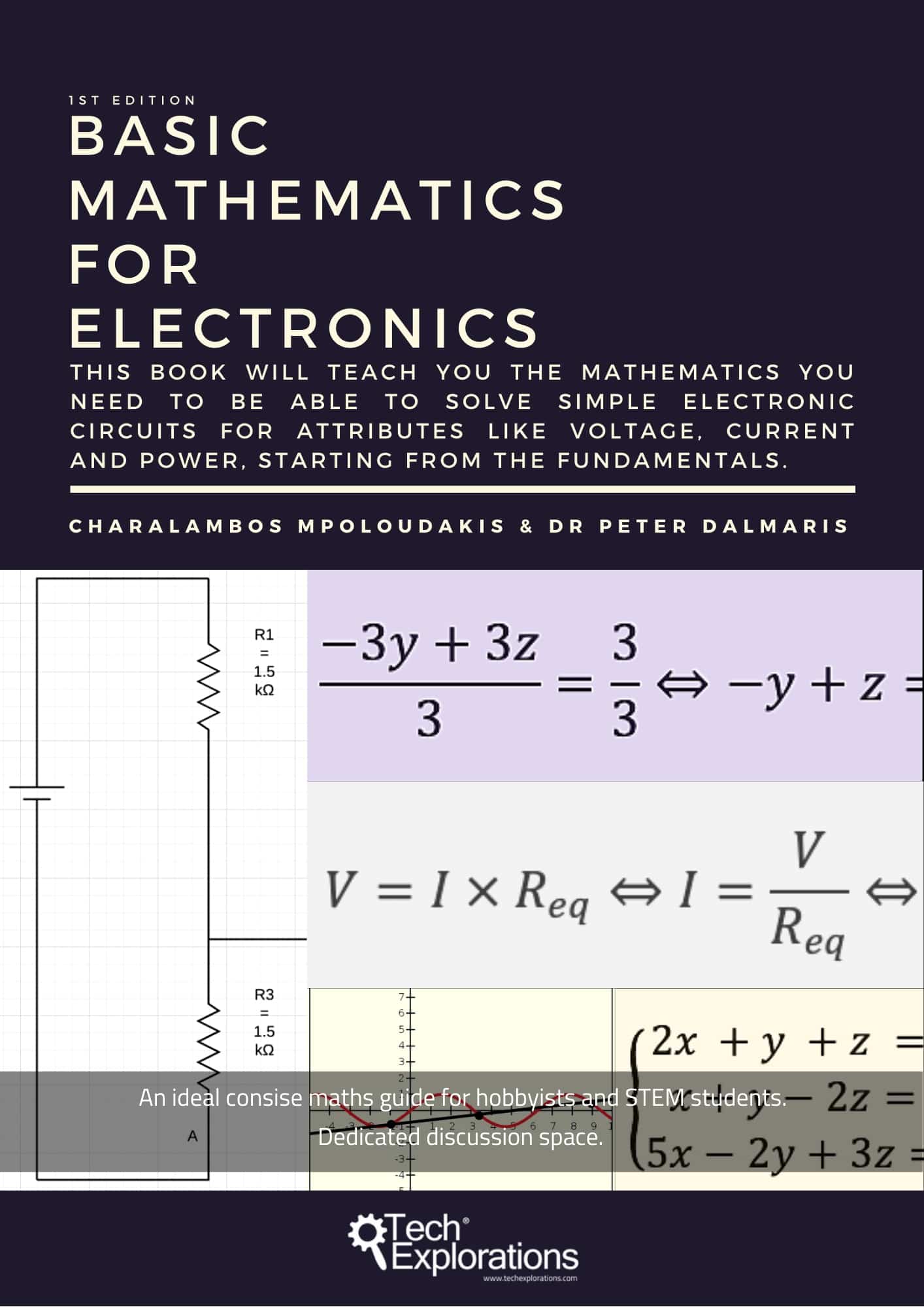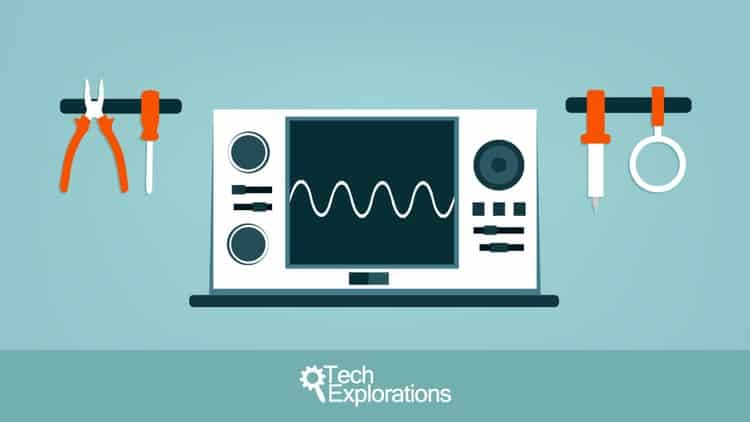Learn Arduino & Electronics with our video courses
We offer a range of courses to help you learn how to use the Arduino, basic electronics, and how to setup to workbench.
All our courses are project-based so you can learn hands-on. Start with Arduino Step by Step Getting Started, and then pick up at least one project course. From there, you can enroll into intermediate-level courses, like Arduino Step by Step Getting Started or Make an Arduino Wheeled Robot.
We support you in this learning journey through the dedicated course forums and the lecture-level questions and answers tool.
This page contains all our Arduino-related courses, books, and downloadable materials.
Jump to...
How about a Subscription?
Get a Tech Explorations subscription and access all of our video courses immediately.
With a catalog of 25+ premium video courses (and growing), this subscription gives you an amazing resource to boost your learning.
Arduino courses and eBooks
A free introduction to the Arduino
A gentle introduction to the Arduino
Enter a world of electronics, prototyping and programming with this free video course.
I have created this free introductory course to the Arduino for anyone interested in this amazing tool, but was confused, and perhaps even a little scared, about all the different options that are available today.
Arduino Step by Step Getting Started
The original comprehensive course designed for new Arduino Makers
This course is for the new Arduino Maker. It will teach you how to use the Arduino and learn about electronics and programming.
Never programmed before? No experience with electronics? No problem.
We designed this course for people just starting now. With our dedicated forum and help desk, you can be sure that you'll have the help you need, when you need it.
This course is the perfect start for the new Arduino Maker.
Arduino Step by Step Getting Serious
Create Arduino gadgets that can communicate, move, interact, measure and detect.
Completed Arduino Step by Step Getting Started?
Already familiar with the Arduino and looking for something more challenging?
This course picks up where Arduino Step by Step Getting Started left off and shows you how to use dozens of external components and advanced build-in features.
With this course, you will expand your Arduino skills by a level of magnitude.
Arduino IoT Cloud for Busy People
Learn Arduino IoT Cloud to create IoT applications based on the Arduino MKR1010, the Arduino Nano 33 IoT, and the ESP32.
This course is for anyone wanting to create secure and scalable IoT applications.
You can be a hobbyist working on a home automation project, or a student working on an assignment or a teacher setting up an IoT lab in the school maker space.
You could be the founder of a startup creating a prototype for an awesome business idea, or a business owner interested in using IoT to automate and optimise your business operations.
You could be an engineer, researching a technology solution for your employer.
Arduino Mobile Development with Blynk
Learn how to use the Blynk platform to create apps for iOS and Android that work with the Arduino Nano 33 IoT and the ESP32 or any other supported device.
With a Blynk smartphone app, you will be able to create powerful applications that integrate your smartphone with any supported device to read data from sensors, control motors, log data, and send out notifications.
This course will introduce you to the Blynk platform through a series of projects based on an Arduino Nano 33 IoT and an ESP32.
The main focus of the Blynk platform is to make it super-easy to develop the mobile phone applications.
Arduino for Beginners with Grove
This course will introduce you to the Arduino by teaching you how to use all of the hardware that comes with the innovative Grove Beginner Kit for Arduino.
The Grove Beginner Kit consists of a single printed circuit board which contains an Arduino board and many common sensors and actuators.
This Kit is ideal for beginners who want to learn electronics and programming without worrying about wires and loose connections.
The objective of this course is to teach you how to use all of the hardware that is included in the Grove Beginner Kit for Arduino in addition to a few extra components.
Grove For Busy People
Grove for Arduino is a system of cables and components that always match.
This course will teach you how to use the Arduino but without the frustration of wires and components that don’t match.
Instead of messing around with breadboards and jumper wires, and struggling to find matching hardware, you can simply use more than 300 Grove standard components, plug them together, and within seconds you have a circuit ready to program with the standard Arduino IDE.
Advanced Arduino Boards and Tools
A tour of advanced Arduino boards, and the tools that will supercharge your projects
Learn about some of the best currently available advanced Arduino boards.
Understand what is special about each one, how you can use them in your projects, and what to look out for when you migrate from the Arduino Uno.
Learn about these advanced Arduino boards:
* Arduino Mega 2560
* Arduino Due
* Arduino 101
* Arduino Zero
* Arduino Galileo Gen 2
Arduino projects
Arduino IoT Environment Monitor Project
The perfect project for the new Arduino maker looking for an IoT challenge.
This course gives you the opportunity to complete your first Arduino project that is non-trivial, combines modern hardware and software components, and includes an Internet of Things element.
In designing this course, one of my core objectives was to make this project course small and focused in scope. With this project, I want to give you a quick win and bolster your confidence so that you will feel good about continuing with bigger and more complicated projects.
Arduino: Make an IoT environment monitor
RETIRED
We have retired this course, and replaced it with Arduino IoT Environment Monitor Project.
Arduino Remote Controlled Car Projects
Learn how to combine a variety of hardware components to create an Arduino car
Arduino Car Projects is ideal for new Arduino Makers and graduates of Arduino Step by Step Getting Started.
Use your Arduino Uno and programs to control a car fitted with motors and sensors.
Use a joystick, and infrared controller, and your smartphone to drive your Arduino car.
This course will teach essential Arduino and programming skills through a series of fun mini-projects of increasing complexity.
Make an Arduino remote controlled car RETIRED
We have retired this course, and replaced it with Arduino Remote Controlled Car Projects.
Learn how to combine a variety of hardware components to create an Arduino car
Make an Arduino Wheeled Robot
Make an autonomous wheeled robot that is attracted to light and can avoid obstacles.
By the end of the course, you will have created an Arduino wheeled robot that can navigate towards a light source and avoid obstacles along the way, on its own.
But more than that, you will have become a better problem solver with experience in analysing problems and designing solutions.
Arduino Robotics with the mBot
An introduction to robotics with the world's friendliest learning robot
The mBot is an Arduino-based, two-wheel robot that comes with build-in sensors and actuators, and that you can program using mBlock, a graphical programming language.
The main project of Arduino Robotics with the mBot involves programming the mBot to follow an arbitrary black line on the floor. In this project, we combine our robot’s sensors and actuators efficiently to enable it to stay on the line while it travels on it as quickly as possible.
This course is also available as an eBook (learn more).
Arduino Mastery Projects
Fine-tune your Arduino knowledge and skills by building 10 gadgets of increasing difficulty.
If you have already taken, or are in the process of taking my Arduino Step by Step Getting Started course, or if you already know the basics of the Arduino platform, then with a little practice you can create very interesting and fun projects on your own!
These projects will give you the opportunity to apply your knowledge of individual components and simple programming to design and make fun gadgets.
eBooks
Arduino Step by Step Draft Notes (Free)
The documentation companion from Arduino Step By Step
This document contains lecture notes from the original Arduino Step by Step video course.
Please be aware that this is a draft document, and has not been thoroughly edited.
It is a complement to the Arduino Step by Step video lectures.
Arduino Bootcamp for Teachers Classroom Resources
The learning resource from the Tech Explorations Arduino Bootcamp for Teachers, licensed to you so that you can use it in your own classroom.
This book contains all of the learning resources included in the Tech Explorations Arduino Bootcamp for Teachers, licensed to you so that you can utilize it in your own classroom.
In its almost 300 pages, you will find:
- A comprehensive set of lecture notes that will help you and your class to start using the Arduino as a STEM educational platform,
- A set of mini and larger projects to apply and consolidate your learnings by doing,
- A set of quizzes to test your comprehension of facts and figures.
Getting Started with mBot (eBook)
Make an autonomous wheeled robot that is attracted to light and can avoid obstacles.
The mBot is an Arduino-based, two-wheel robot that comes with build-in sensors and actuators, and that you can program using mBlock, a graphical programming language.
The main project of Arduino Robotics with the mBot involves programming the mBot to follow an arbitrary black line on the floor. In this project, we combine our robot’s sensors and actuators efficiently to enable it to stay on the line while it travels on it as quickly as possible.
You should also checkout these courses:
Basic electronics for Arduino Makers
An introduction to electronics to help you make the most from your Arduino or other prototyping platform.
By the end of this course, you will have learned how to use commonly used components found in Arduino projects. You will also have learned how to do the relevant measurements and calculations to help you select appropriate components for your projects.
To complete this course, you will need a few cheap and common components and tools: resistors, capacitors, transistors, LED, diodes, and batteries. You will also need a multimeter, a small breadboard and jumper wires. All of these are probably things that you already have.
Introduction to Electronics - The Basics
A comprehensive course and eBook to help you start your adventure in electronics. Solve circuits, simulate, and experiment on the breadboard.
Master the fundamentals of electronics with hands-on projects and practical knowledge for beginners.
In this beginner-friendly course and eBook, you’ll learn the fundamental concepts of electricity, circuits, and components through a series of engaging, hands-on projects. From understanding the basics of Ohm’s Law to building circuits on a breadboard, you'll gain the confidence to design, assemble, and troubleshoot your own electronic creations.
This introductory electronics course is designed for anyone who wants to build a solid foundation in electronics, whether you're a complete beginner or have some prior experience and wish to formalize your understanding.
Introduction to Electronics - Filters
Understand, design, and simulate RC and RL, first order filter circuits.
This course introduces the foundational concepts of RC and RL filters, empowering you to understand, design, and analyze these essential circuits.
You will explore how these filters control and shape electrical signals through low-pass and high-pass configurations, and learn how to determine critical parameters such as cutoff frequency and phase shift.
The course also covers real-world applications of these filters, from audio tone shaping and noise removal to sensor signal conditioning and switch debouncing.
Basic Mathematics for Electronics
Learn the mathematics you need to be able to solve simple electronic circuits for attributes like voltage, current and power.
Even if you haven't solved a single equation since high-school, this book will help you learn (or re-learn) exactly the mathematics you need to be able to comfortably calculate the main attributes of simple (and more complicated) linear circuits.
This skill is vital for anyone wanting to really understand what is going on in a circuit.
We wrote this book specifically for people that are working with simple electronic circuits such as those that you find in Arduino projects.
The Electronics Workbench: a Setup Guide
Setting up your electronics lab at home can be a daunting. This course will help you navigate through the maze of options.
If you are a new Maker, one of the first things you will need to do is to setup your workbench.
This includes setting up your work area, selecting tools and instruments, and sourcing the components, and how to work with electricity and electronic components safely.
This course will show you how to setup your electronics workbench so you can start making your first Arduino or Raspberry Pi gadget with comfort and safety.
Last Updated 2 weeks ago.

